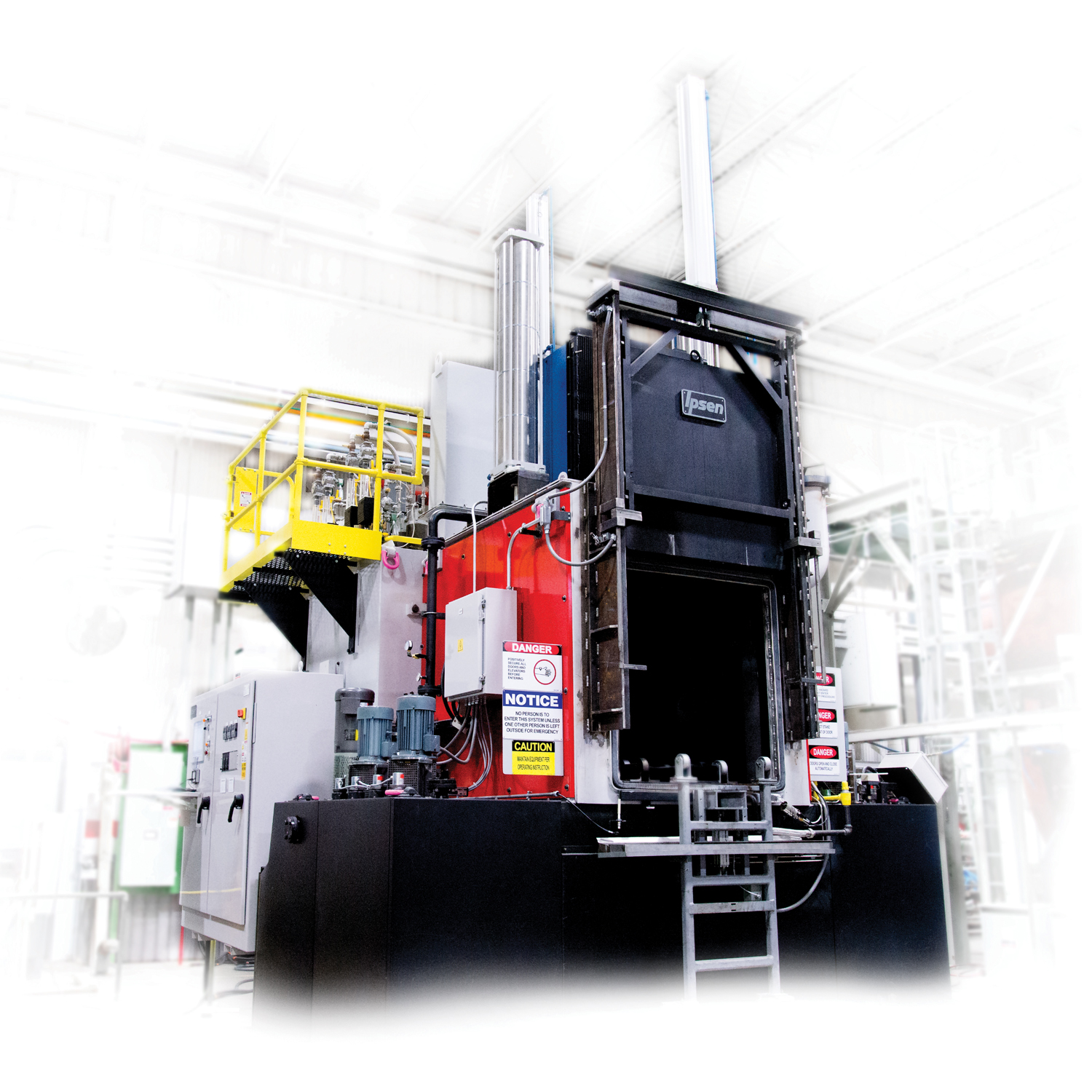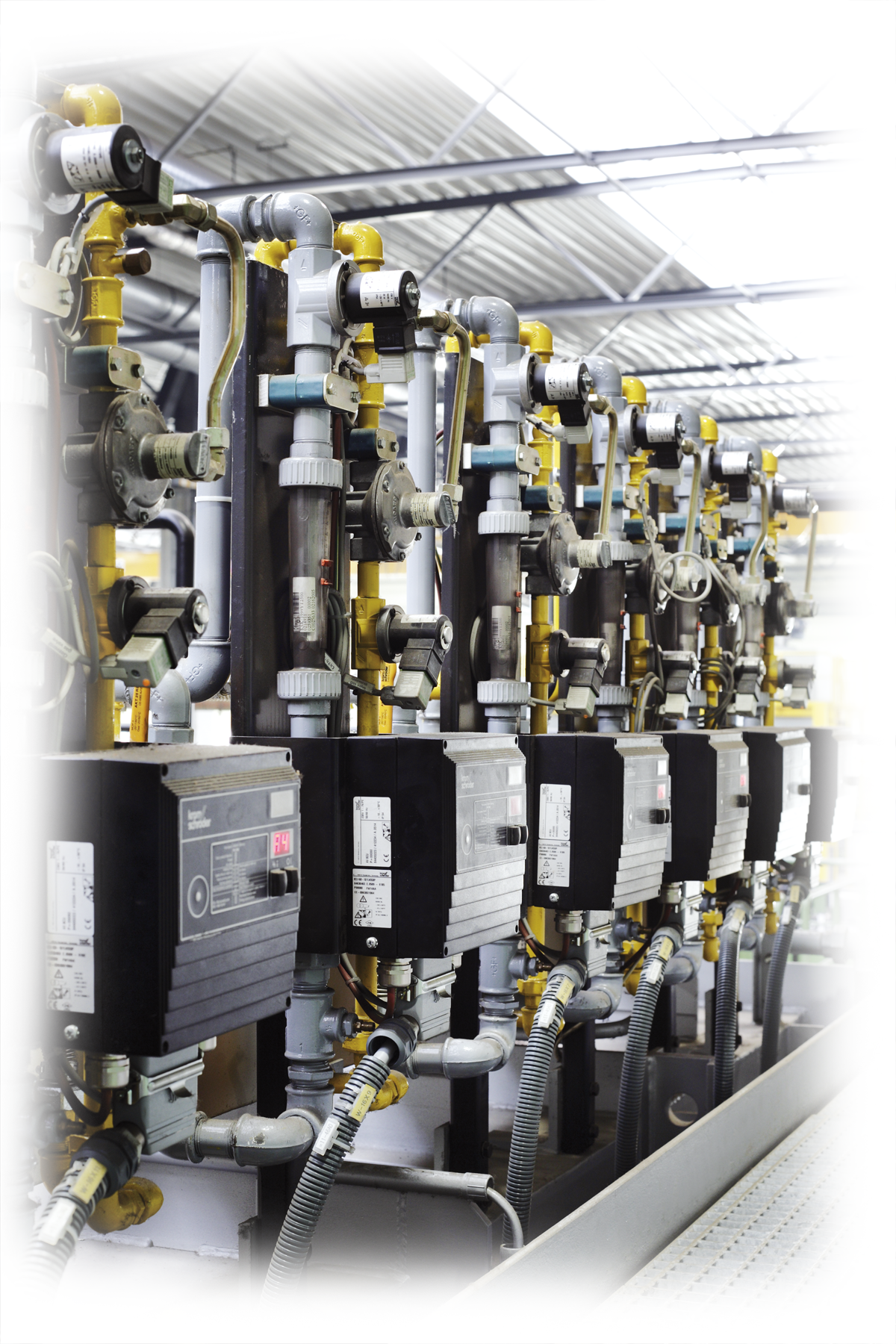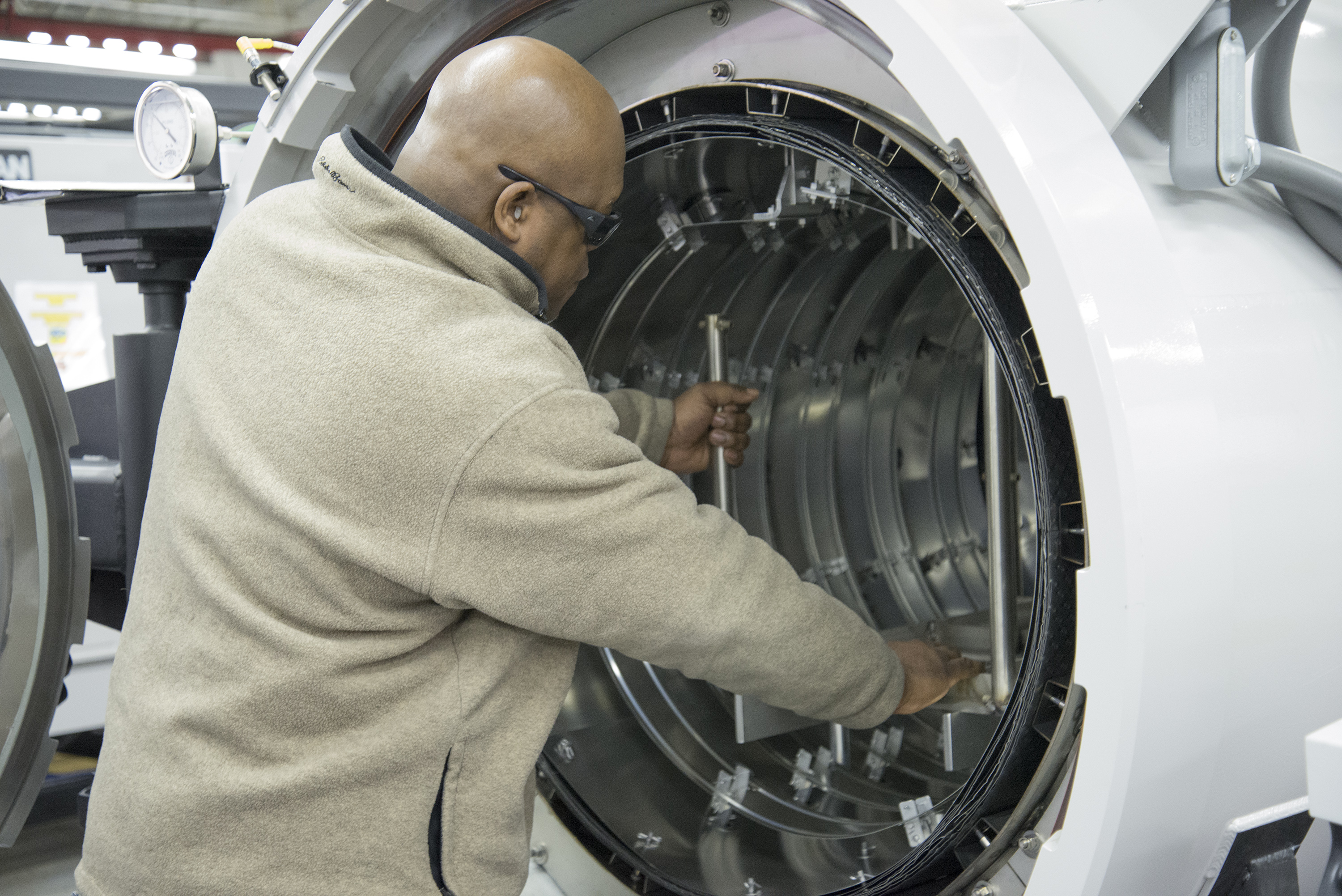Maintaining temperature uniformity in a furnace means that all parts of the furnace are exposed to the same temperatures, ensuring a superior product quality.
Temperature uniformity describes the variation in temperature throughout a furnace workspace and is stated in ±°F or ±°C at a set temperature [1]. In many atmosphere furnaces, the temperature is controlled by one thermocouple (or multiple redundant thermocouples in the same location), but this does not necessarily mean that the temperature throughout the entire furnace is the same as the reading given by the thermocouple. An obvious solution to this problem would be to design furnaces in such a way that thermocouples are distributed evenly throughout the furnace. However, design and pricing limitations mean this is rarely possible.

Temperature uniformity can be particularly problematic in large furnaces where large, or separate, areas of the furnace could be different temperatures than that measured by the thermocouple. Temperature fluctuations throughout a furnace can be caused by its different characteristics, including insulation thickness, position of furnace openings, air distribution, volume of airflow, control accuracy, and construction techniques. Strategic furnace design and precise construction from high-quality materials can help produce furnaces with tight uniformity.
For example, Ipsen’s ATLAS atmosphere furnace uses Recon® III burners coupled with reliable fuel delivery and a burner management system to provide uniform heating. However, it is more than just how a furnace is built. Proper furnace maintenance is also critical to ensure the temperature in the furnace remains uniform throughout its life span.
This article outlines best practices for maintaining temperature uniformity in your atmosphere furnace [1-3].
Furnace burnouts
Burnouts, or cleanup cycles, remove carbon deposits (soot) that build up during operation by exposing carbon deposits to oxygen, which react to form carbon dioxide. Proper cleanup procedures are essential to maintain precise process control and temperature uniformity.
To conduct a cleanup cycle, the temperature of the furnace should first be reduced to 1,550-1,600 °F (845-870 °C). Then, air can be introduced into the furnace in a number of ways. The simplest method involves removing the protective atmosphere in the furnace and then introducing clean, dry, filtered air through a flowmeter for three to eight hours [4].
If furnace cleanup cycles are not conducted regularly (weekly to monthly depending on soot buildup), soot formation can damage the furnace components, such as reducing the life of heating elements and causing temperature fluctuations. Cleanup cycles that are not conducted carefully can be equally damaging. The formation of carbon dioxide is highly exothermic and can cause overheating or localized hot spots that can damage the furnace.
If the temperature in the furnace rises more than 100° F (38° C) during the cleanup process, the procedure should be terminated to protect the furnace components [4].

Inspect furnace linings
Insulation and refractory materials used in the furnace lining prevent heat losses through the furnace walls. If this insulation is not well maintained and becomes damaged, more heat is lost through the furnace walls, and the temperature uniformity in the furnace is reduced.
Furnace liners can be inspected visually or using infrared thermography to identify any hot spots or areas where the insulation is breaking down. Skilled infrared thermographers can analyze the furnace lining from outside the furnace during operation, which saves downtime costs.
If a skilled thermographer is not present, visual inspection of the furnace lining can be carried out when the furnace is out of operation. However, as this technique is based on human vision, there is a higher chance of error.
If hot spots are found, they can be repaired or, if the area is too large for repair, the liner can be replaced to restore adequate insulation and improve temperature uniformity [5,6].
Burner tuning
The furnace’s heating system plays a vital role in maintaining performance and temperature uniformity; the burners must be tuned together within a tight temperature range to maintain temperature uniformity throughout the furnace. An air-to-gas ratio of 10:1 should be maintained at each burner using individual controls that adjust the air and gas flows.
The air-to-gas ratio should be checked every six months using a combustion analyzer and maintained at 10:1. Doing so maintains temperature uniformity and ensures maximum efficiency. It is also important to check on a monthly basis that the air filter on the regenerative blower is clean and has no blockages, enabling it to maintain efficient airflow to the burners [3].

Temperature uniformity surveys
Temperature Uniformity Surveys (TUS) test the uniformity of a furnace using readings from six to nine thermocouples placed at different positions in an empty furnace. A representative process is conducted to mimic the conditions during actual production and data is collected from the thermocouples.
The temperature variation within the furnace’s work zone is measured before and after thermal stabilization. A TUS can help identify reductions in uniformity and should be conducted before the first use and periodically (at least every six months) to ensure uniformity is maintained. A TUS should also be conducted after any major repair work or if the integrity of the equipment is questioned [7-10].
Conclusions
Temperature uniformity in atmosphere furnaces is vital to ensuring product quality. Well-designed and manufactured furnaces, such as the ATLAS atmosphere furnace, provide excellent temperature uniformity. However, regular and careful furnace maintenance is critical for preserving that temperature uniformity and superior performance throughout its life span.
References
- Despatch, ‘Engineer’s Guide to Effective Heat Processing,’ available from http://www.despatch.com/pdfs/EngineeringGuide.pdf
- http://www.ipsenusa.com/products/atmosphere-furnaces/batch-furnace-systems/atlas Accessed September 20, 2017.
- http://www.ipsenharold.com/2017/05/guest-post-atmosphere-furnace-burners/ Accessed September 20, 2017.
- http://www.industrialheating.com/articles/91413-atmosphere-furnace-burnouts Accessed September 20, 2017.
- https://insulation.org/io/articles/five-tips-for-achieving-furnace-lining-efficiency/ Accessed September 20, 2017.
- Rebernak T, Chernak S, ‘Hot stuff’ Plant Engineer, January/February 2011, 26-27. Available from http://www.plantengineer.org.uk/article-images/31341/Hot_Stuff.pdf
- http://www.ipsenharold.com/2016/03/time-tus-7-simple-steps-success/ Accessed September 20, 2017.
- http://www.industrialheating.com/articles/90454-temperature-control-and-uniformity-in-industrial-high-temperature-atmospherevacuum-furnaces Accessed September 20, 2017.
- Herring DH, ‘Temperature Uniformity Survey Tips. Part One: Atmosphere Furnaces’ IndustrialHeating.com May 2009 20-22. Available from http://www.heat-treat-doctor.com/documents/AtmosphereFurnaces.pdf
- http://www.ipsenharold.com/2015/03/temperature-uniformity-surveys/ Accessed September 20, 2017.




































